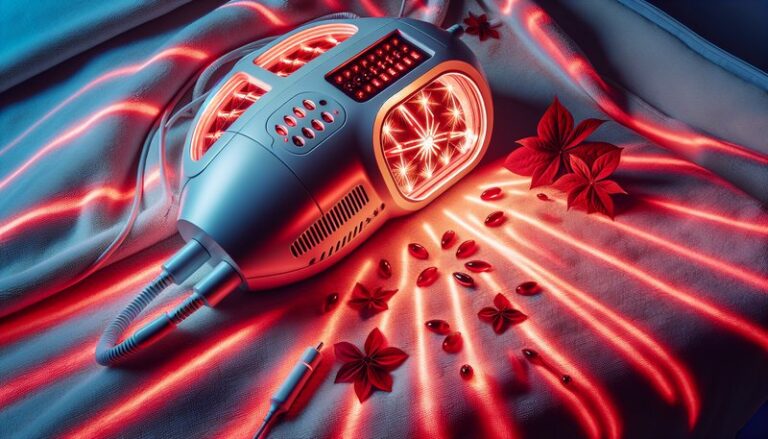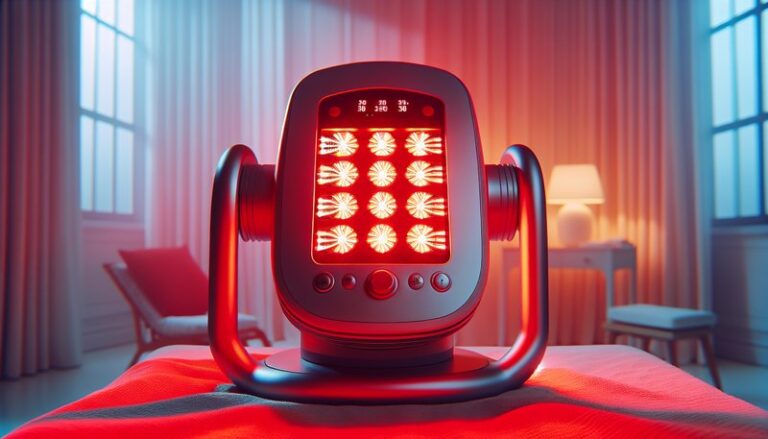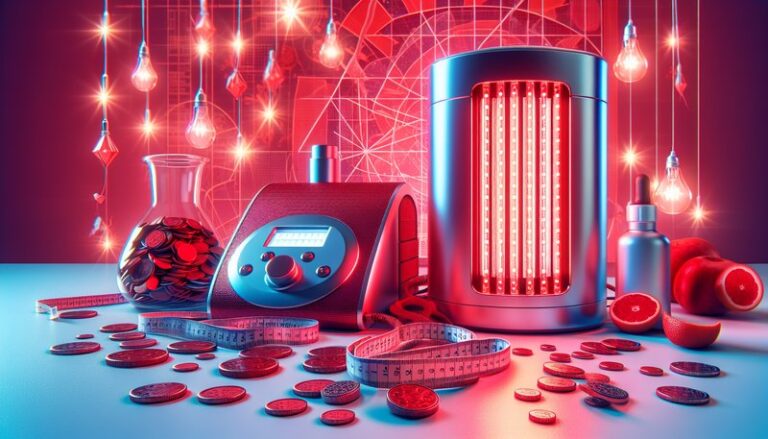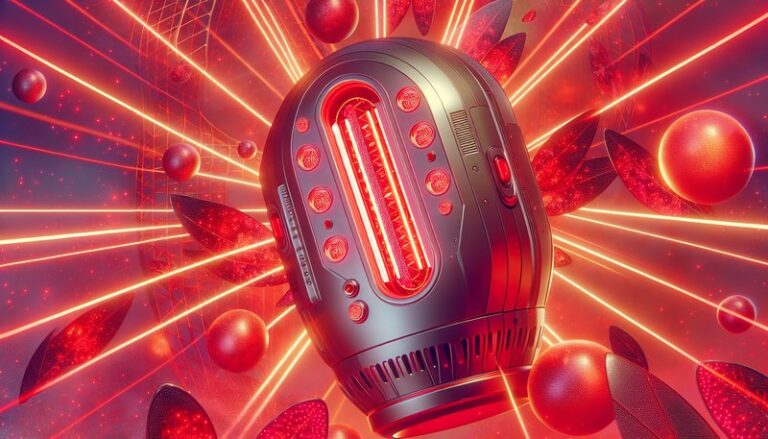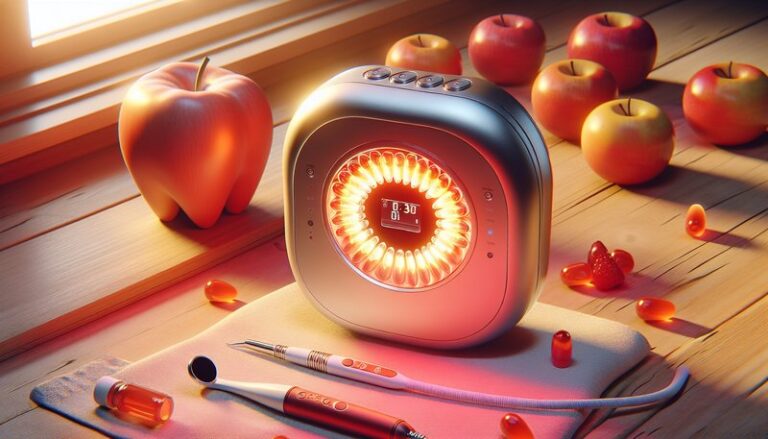Does Red Light Therapy Help With Depression?
Does Red Light Therapy Help With Depression?
Is there a light at the end of the tunnel for those suffering from depression?
In recent years, red light therapy has emerged as a potential adjunctive treatment for various mental health issues, including depression. This article will explore what red light therapy is, the benefits it may offer for mood disorders, considerations to keep in mind, and alternatives worth investigating.
Key Takeaways
- Red light therapy uses specific wavelengths of light to promote healing and may have positive effects on mental health.
- Research suggests that red light therapy can help reduce symptoms of depression, although more studies are needed.
- As with any treatment, it’s essential to consult with a healthcare professional before starting therapy.
What is Red Light Therapy?
Red light therapy (RLT) is a treatment that involves the use of low-level wavelengths of red or near-infrared light to stimulate cellular processes in the body. This non-invasive therapy is thought to enhance mitochondrial function, which may improve energy production in cells and promote healing.
RLT has been historically used in dermatology for skin conditions, wound healing, and even hair regrowth. However, its application in treating depression has garnered attention due to its ability to affect the brain and overall well-being.
Mechanism of Action
The theory behind RLT’s impact on mental health lies in its potential ability to increase serotonin levels and reduce inflammation. Research has indicated that RLT could enhance neurogenesis, the growth of new neurons, which is often impaired in individuals with depression.
What are the Benefits of Red Light Therapy?
Understanding the advantages of red light therapy is crucial for evaluating its role in treating depression.
Supports Mood Enhancement
Multiple studies have indicated that exposure to red light can lead to increased levels of serotonin, the “feel-good” hormone. Higher serotonin levels can contribute to improved mood and reduced symptoms of anxiety and depression.
Enhances Sleep Quality
Quality sleep is essential for mental health. RLT has been suggested to help regulate circadian rhythms, potentially improving sleep quality, which is often disrupted in those suffering from depression.
Reduces Inflammation
Research has shown that inflammation can play a role in the pathology of depression. RLT may help mitigate inflammatory markers, contributing to overall emotional stability and health.
Boosts Energy Levels
Many individuals with depression experience fatigue and low energy. RLT may enhance mitochondrial function, leading to increased cellular energy, which can help combat feelings of lethargy.
Is it Possible to Treat Depression with Red Light Therapy?
While the idea of treating depression with red light therapy is promising, it’s essential to understand its feasibility and current limitations.
Though some clinical trials have shown encouraging results, further research is needed to establish RLT as a standalone treatment. RLT should not be viewed as a replacement for traditional therapies such as medication or cognitive-behavioral therapy (CBT).
What are the Advantages of Using Red Light Therapy?
Non-Invasive Approach
RLT is a non-invasive treatment, making it an appealing option for those hesitant about medications or more invasive therapies.
Minimal Side Effects
Compared to pharmaceuticals used to treat depression, RLT is generally well-tolerated with relatively few side effects reported, making it a safer option for many individuals.
Accessibility
With the availability of at-home RLT devices, individuals can easily integrate this therapy into their daily routines.
What are the Disadvantages of Using Red Light Therapy?
Limited Research
While promising, the research surrounding RLT for depression is still in its early stages. More extensive, rigorous studies are needed to solidify its efficacy.
Not a Cure-All
RLT should be considered as part of a more extensive treatment plan, rather than a single answer for depression. Various individuals may respond differently, and what works for one person may not work for another.
Potential Costs
Although at-home devices are available, some people may find the initial investment pricey compared to conventional treatments, especially if insurance does not cover it.
What are the Things to Consider Before Trying Red Light Therapy?
Before embarking on any new therapy, several factors should be considered.
Find out everything in Is it safe?
Consultation with a Healthcare Provider
Always consult a healthcare professional before starting new treatments to ensure they align with your overall mental health care plan.
Understanding Individual Needs
Each individual’s experience with depression can differ. Tailoring the approach to fit personal needs is crucial for treatment effectiveness.
Monitoring Treatment Progress
Keeping track of symptoms and progress is essential to assess whether RLT is positively impacting your mental health.
What are the Alternatives to Red Light Therapy?
If red light therapy does not resonate with you, several alternatives can also aid in managing depression.
Cognitive Behavioral Therapy (CBT)
CBT is a well-established therapy that helps individuals alter negative thought patterns, providing essential coping strategies.
Medication
Antidepressants, when prescribed by a healthcare provider, can be an effective method for treating moderate to severe depression.
Meditation and Mindfulness Practices
These techniques focus on promoting awareness and relaxation, which can help reduce symptoms of anxiety and depression.
Exercise
Regular physical activity has been consistently shown to improve mood and reduce symptoms of depression, making it a valuable alternative.
Conclusion: Is it Recommended to Use Red Light Therapy?
While red light therapy presents a compelling adjunctive option for those experiencing depression, it should not replace standard treatments but rather complement them. The benefits, although promising, require further research and should be discussed with a healthcare professional.
Frequently Asked Questions
Can red light therapy be used at home?
Yes, many at-home red light therapy devices are available on the market, allowing individuals to incorporate this therapy conveniently into their self-care routines.
How long should sessions of red light therapy last?
Most recommendations suggest sessions lasting between 10 to 30 minutes, depending on the device and specific needs.
Explore further in Does RLT Tighten Skin?
Is red light therapy safe for everyone?
While RLT is generally considered safe, those with specific medical conditions or light sensitivities should consult with a healthcare provider.
Are there specific wavelengths of red light that are most effective?
Studies suggest that wavelengths between 600 nm and 800 nm are generally regarded as most effective for therapeutic purposes, including mood enhancement.
How soon can one expect to see results from red light therapy?
Results can vary widely, but some individuals may begin to notice improvements in mood or energy levels after a few sessions, while others may require more time to see benefits.

